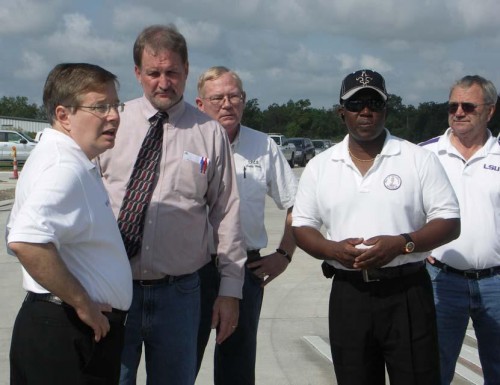
T’bonne’s westside expansion progresses for traffic
October 11, 2011Robert Paul Bourg
October 13, 2011Louisiana officials seeking to erase the stereotype of tainted shrimp, crab and fish dirtied by the Gulf oil spill unveiled a new website Friday that contains test results they say proves to restaurants and consumers that the state’s seafood is safe to eat.
The website www.gulfsource.org shows data collected by the Louisiana departments of wildlife and fisheries, environmental quality, health and hospitals, and agriculture and forestry.
Health and Hospitals Secretary Bruce Greenstein said of more than 2,100 samples taken over the last year since the massive oil spill, no sample of seafood, water or sediment has tested near the federally-established “level of concern.”
“Our seafood in Louisiana is absolutely the most tested seafood in the world, and we’ve got a lot of data we want to share with the public,” said Wildlife and Fisheries Secretary Robert Barham. “We obviously have to overcome consumer resistance to Louisiana seafood, and part of the process is education.”
The testing is paid through an $18 million grant from BP PLC after the oil spill. Shrimp, crab, finfish and oysters are sampled monthly, along with water and sediment, to look for oil, toxins and chemicals and determine how much the 2010 spill has damaged the Gulf of Mexico ecosystem.
Louisiana leaders say they want to advertise and market the findings around the country to seafood buyers who have stopped getting Gulf Coast oysters and shrimp because they fear contamination. Online ads already have begun to tout the new GulfSource website, and they plan to expand the advertising.
The site allows users to look at all the testing done by the four Louisiana agencies since the spill or to conduct specific searches by date, region or type of sample.
The seafood testing money from BP, which started flowing this year, is to cover three years of soil, water and seafood sampling up to $18 million.
A separate $13 million grant from the oil giant is paying for a three-year study of the spill’s impact on fisheries habitat.






